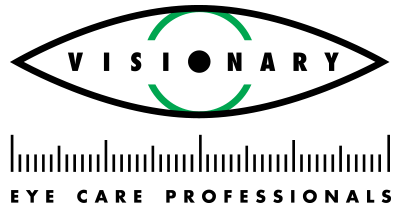Ironically, one of the most common symptoms of keratoconjunctivitis sicca (KCS) aka dry eye syndrome is tearing, especially when it is sunny or windy. Other symptoms you may experience are burning, dryness, a sandy/gritty sensation and discomfort with your contact lenses, especially at the end of the day. If you are living with any of the above symptoms and thought it was just something you had to deal with, you are in luck. There are many treatments for dry eye that can make a huge difference in your quality of life.
Often patients think it’s a little crazy at first when I explain to them that their tearing is a symptom of dry eye. It just sounds wrong. But it makes sense. There are three layers to our tear film: a mucoid layer, an aqueous layer and the upper lipid layer. If you are deficient in the oily lipid layer, your tears evaporate too quickly which then causes eye irritation. What does your brain tell you to do when your eyes are irritated? “Tears, Stat!” You tear to rinse your eyes out. That is why KCS almost always causes tearing.
Some patients do not mention their dry eyes because they think it is not a big deal. Actually, your tears are the first protective layer your eyes have. Without your tears, your eyes are more sensitive to allergens and more likely to become infected. Severe dry eye can even eventually cause scarring of the corneas.
“What caused my eyes to be dry?”
This is usually the first question I get asked and my answer is, “Lots of things.” There are so many causes for dry eye I’m using a bullet list:
- Age because as we get older we tend to produce fewer tears
- Female gender especially postmenopausal
- Smoking
- Tasks that require concentration because we blink less. Big culprits include using computer and electronic devices
- Refractive surgery as in LASIK and PRK
- Soft contact lens wear because soft contacts are 50% water and act like sponges, absorbing moisture
- Eye lid disease which is defined as lids that turn in or out, or a clogging of the glands behind the lashes
- Environmental factors such as wind, sun, heaters, air conditioners
- Medications including but not limited to: oral birth control, anti-histamines, high blood pressure, acne, and hormone replacement medicines
If the above list does not apply to you then I also mention, “Some people just have dry eyes.”
If your dry eye is very mild, your doctor may recommend warm compresses. Applying mild heat to the closed eyelid (never apply heat directly to the eye) will help open the meibomian glands that produce the protective oily layer. Also using pre-medicated lid scrubs can help keep the glands clean and open. Sometimes we add a medication that is the eye gel version of a Z-pak to aid in opening the meibomian glands.
Over-the-counter artificial tears can sometimes help. The problem is that most rewetting drops are very watery. They are not addressing the real problem. And because they are watery, the relief can be very temporary, sometimes lasting only a few minutes. If you are going to use an over-the-counter drop, make sure it is a lubricating (not just rewetting) drop.
A good quality source of omega-3s can also be helpful. Fish oil is more effective than flax seed oil if you can tolerate it. Keep in mind not all fish oil supplements are made the same. We recommend Zeavision EyePromise® EZ Tears because they are highly purified, enteric-coated to reduce “fish burp” and are made in the US from all-natural ingredients. Again, fish oil is helpful; the only problem is, once you stop taking it the dryness and symptoms will return.
KCS is an inflammatory condition that feeds back on itself. The inflammation causes dryness. The dryness causes inflammation. One of the most effective treatments for KCS is a topical steroidal drop to quickly quell the inflammation. Steroids are very safe and effective when used over the short term (a month or two). There can be side effects in certain patient populations with cataracts or a certain type of glaucoma if used for too long or without proper follow-up evaluations.
The only FDA approved medication for KCS is Restasis®. Restasis® is a non-steroidal anti-inflammatory drop, sort of “aspirin for the eyes.” Restasis® is almost a perfect medication. It works. It is well tolerated. It has few side effects (about 5% of people experience some stinging, burning or redness but it usually only lasts a few days). The only downside is that it is slow to start producing results. That is why I will usually start patients on a lid medication or a steroid first to get the condition under control. Then we use Restasis® for maintenance. Because it addresses the problem, Restasis® can be a relatively long-term cure for KCS. Typically 85% of patients need to take it for about a year while 15% need to take it forever.
If your KCS is severe or medication has not helped enough, we can use punctal plugs. The puncta are drainage holes in the inner corner of both the upper and lower lid. Every time you blink, the two puncta come into contact and create a vacuum. When you open your eyes, the tears get “sucked out.” We will typically only plug the lower puncta, as you need to have some drainage. As icky as this may sound, it is a quick, painless procedure done in the office with topical anesthetic drops.
==== Visionary treats KCS ====
If you have been living with dry, teary, burny, blurry eyes or cannot wear your contacts all day, Dr. Michael loves treating KCS, not just writing about it. Make an appointment so we can get your eyes healthy, white and comfortable again.

